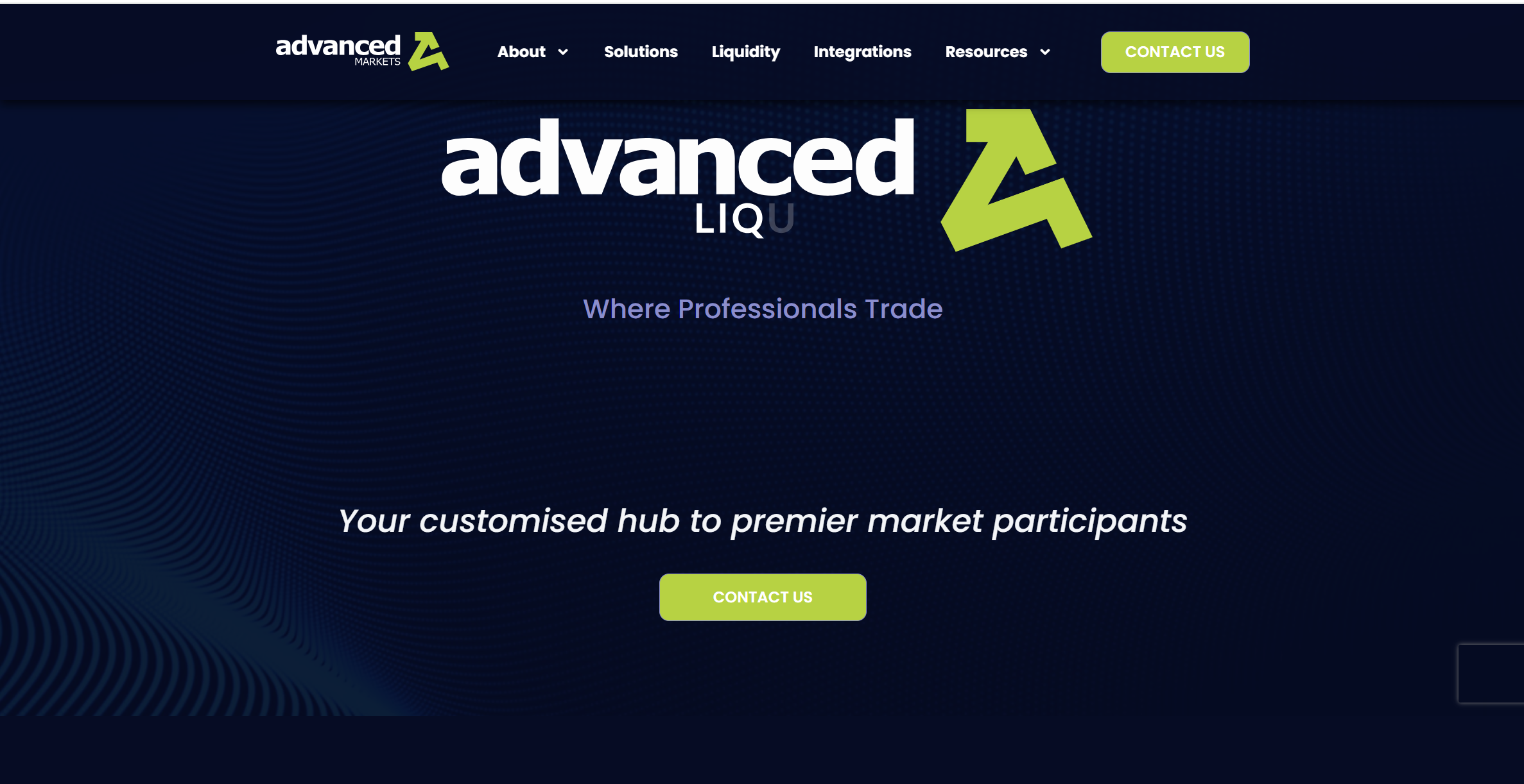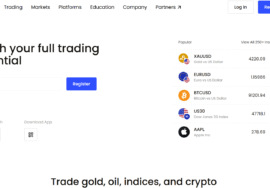
7 Strengths & Warning Signs: Advancedmarkets (Prime-of-Prime) Deep-Dive
7 Strengths & Warning Signs: Advancedmarkets (Prime-of-Prime) Deep-Dive

Advanced Markets describes itself as a prime-of-prime liquidity provider offering institutional-grade access to FX and CFD liquidity, low-latency execution, and full market depth. Founded in 2006, the group operates multiple entities and focuses primarily on professional clients such as brokers, hedge funds, asset managers, and proprietary trading firms. If you’re evaluating Advanced Markets for liquidity, white-label brokerage, or institutional execution, the profile below combines verified strengths with practical caveats.
1) Regulatory footprint: FCA-authorised UK entity and an AFSL in Australia (Strength + Caveat)
Advanced Markets (UK) Ltd is authorised and regulated by the UK Financial Conduct Authority. The UK entity explicitly states that it serves only clients who qualify as Professional or Eligible Counterparty under the FCA and MiFID rules; in other words, it is not positioned for retail consumers. Separately, the group also references an Australian Financial Services Licence held by Advanced Markets Ltd (AFSL 444649). The existence of named, verifiable licences in major jurisdictions is a meaningful positive.
Caveats: licence scope matters. The UK authorisation is strong, but services under that entity are restricted to professional classifications; if you are retail-only, you won’t onboard there. In Australia, ASIC has previously required the firm to clarify language about how its licence should be understood, a reminder to read exactly what any AFSL covers and where it applies.
2) Prime-of-prime model with deep, multi-source liquidity (Strength)
Advanced Markets centres on bank-grade access and institutional execution: aggregated liquidity from Tier-1 banks, non-bank market makers, and ECNs; full market-depth transparency; and straight-through processing designed to keep the provider out of the order-taking / B-book role. For brokerages and funds, the practical upside is tighter pricing during liquid periods, depth that can help with larger tickets, and cross-venue routing that targets competitive fills. The firm’s public materials emphasise FIX connectivity, bridge integrations, and low-latency infrastructure aligned to London and other major hubs.
If you operate a brokerage or trade size, having a single PoP that aggregates many streams simplifies integrations and credit lines versus attempting dozens of bilateral bank relationships on your own.
3) Institutional positioning: who it’s for (Strength + Expectation-setting)
Everything about the presentation points to institutional and professional users: brokers wanting tailored liquidity pools, hedge funds and CTAs needing consistent fills, and prop desks that want transparent depth. The UK entity’s professional-only stance codifies this. That doesn’t mean a sophisticated individual can never engage the group via certain structures, but the default target is businesses and professional traders who already speak FIX, bridge, margin hub, and prime brokerage dialects.
Expectation-setting: onboarding will include substantial KYC/AML, documentation on ownership and source of funds, and operational due diligence around your trading flow, venue connectivity, and risk controls. If you need a plug-and-play retail account with a few clicks and a debit card, this isn’t that offering.
4) Ownership, banking and operational resilience claims (Strength, to be verified in diligence)
The public site highlights “institutional strength” including backing by a major global financial group and the option for segregated custody accounts with a well-known international bank. For institutional buyers, those details matter: balance-sheet support, reliable clearing arrangements, and ring-fenced custody can reduce operational and counterparty risk. In diligence, ask for current letters, service-level agreements, and attestation on how client money is handled across entities and geographies. If your mandate requires specific bank names, reconciliations, or SSA structures, confirm this before building your bridge.
5) Technology stack and integration paths (Strength + Caveat)
Advanced Markets markets low-latency STP, FIX API access, and native integrations to popular bridges and hubs. For brokers, that typically means you can pipe liquidity into MT4/MT5 bridges, cTrader, and other OMS/EMS stacks; for funds, it means direct FIX straight to the LP. The vendor offers content on commission models “from lots to millions” and on building custom pools for a given flow profile.
Caveat: “low latency” is relative. Your actual round-trip depends on your colocation, cross-connects, bridge configuration, and risk checks. When you trial, measure tick-to-trade and trade-to-ack latencies in your own setup, and evaluate slippage distributions across your real order types (market, partials, sweep-to-fill). Demand per-instrument fill stats, not just blended aggregates.
6) Cost structure and economic alignment (Mixed)
Prime-of-prime pricing is usually a combination of raw spread plus commission per million, plus connectivity and account fees as applicable. The upside versus retail makers is transparency and capacity; the downside for smaller flows is that commission-per-million can feel chunky at low volume. If you’re a broker, also model the economics of internalisation vs. externalisation: a pure-STP model with a PoP can be cleaner for conflicts and marketing, but your end-client pricing must absorb commissions, bridge costs, and bank rails. If you trade event risk or run aggressive alpha, discuss last-look, hold times, sweep logic, and reject codes with the LP desk to ensure your strategy is genuinely supported.
7) Reputation, reviews and historic regulator communications (Warning-aware, but not alarming)
Public, mass-market review sites show very few reviews for Advanced Markets and a middling average score. That isn’t surprising for an institutional-leaning provider; retail-style review volume is low because the core clients aren’t posting on consumer portals. More relevant is the firm’s long operating history and named licences. Also worth noting: years back, the Australian regulator publicly announced that Advanced Markets agreed to clarify wording around the scope of its AFSL. That episode doesn’t read as a sanction so much as a guard-rail reminder: ensure marketing language and licence scope match, and read your contracts carefully. Overall, we did not find a pattern of major enforcement against the core entities, but as always, you should run your own register checks before signing.
Practical due-diligence checklist (actionable)
- Entity-match your use case. If you require UK-style governance, ensure you are contracting with the FCA entity and that you meet Professional/Eligible Counterparty criteria.
- Demand domain-to-licence proof. Obtain written confirmation linking the legal entity on your contract to the precise domain and services you will use.
- Request bank and custody details. Who holds client money? Can you have SSA/segregated custody? What are reconciliation and reporting cadences?
- Benchmark execution. Run a time-boxed pilot: capture fill rates, partials, slippage histograms, and rejects by venue and time-of-day.
- Scrutinise economic terms. Commission per million, minimums, connectivity fees, credit line terms, and last-look or toxicity policies should be crystal clear.
- Stress-test ops. Ask for incident history and RTO/RPO; simulate a line failure, and verify fallbacks, kill-switches, and out-trade handling.
- Map compliance. Confirm onboarding, reporting, and market abuse surveillance responsibilities between you and the LP; document them.
Conclusion: Final Verdict on Advanced Markets
Advanced Markets presents a professional, institution-first proposition: multi-source liquidity, full market depth, low-latency routing, and meaningful regulatory anchors in the UK and Australia. For brokers and funds that want a single PoP relationship instead of managing a dozen bank lines, the value is convenience, aggregation quality, and specialist support for bridges and FIX. The company’s longevity and clearly stated professional-only stance in the UK are consistent with a serious B2B provider rather than a retail shop.
That said, a prime-of-prime is not a magic wand; it is a counterparty with policies, economic incentives, and risk controls that must line up with your flow. If you routinely trade through the spread, hit top-of-book with size in thin hours, or deploy latency-sensitive strategies, measure the practical effects: last-look behaviour, minimum quote life, sweep logic, venue composition, and reject codes. An excellent marketing headline can still mask venue mixes that don’t suit your alpha.
Regulatory posture is a net positive, but precision matters. The UK authorisation applies to professional classifications only, and the Australian AFSL has a defined scope; neither converts a B2B liquidity arrangement into retail protection or a promise of perfect fills. The prior ASIC communication about licence wording is a useful reminder to confirm what each licence allows, where, and for whom. Put differently: the presence of licences is good; the alignment of those licences with your operating entity and product is what protects you.
On costs, commission-per-million and connectivity are normal at the institutional layer. For brokers, the question is how those costs flow through to end-clients without breaking your pricing or creating perverse incentives. For funds, evaluate whether the PoP’s venue blend and sweep rules deliver competitive realised spreads across your real order size distribution, not just for 100k clips at noon London.
Finally, treat the softer claims with a diligence lens. Backing by a major financial group and optional segregated custody at a name-brand bank are promising—ask for the paperwork. If custody is crucial to your mandate, get the structure in writing, not as a brochure bullet. And because retail-style review sites under-represent institutional sentiment, build your own reference checks: speak to current B2B clients of similar size and style if possible.
Bottom line: Advanced Markets looks like a credible prime-of-prime for institutions and professional firms that value aggregated liquidity, transparent depth, and FCA/AFSL-anchored governance. It is not positioned for retail, and it is not a substitute for your own execution, legal, and operational diligence. If you align entities correctly, pilot execution with real orders, and lock down custody and economics in writing, Advanced Markets can be a solid component in a professional liquidity stack. If you need retail hand-holding or top-tier bank PB directly, this won’t be a fit; if you need an efficient institutional bridge with sensible governance, it’s worth a serious look.








